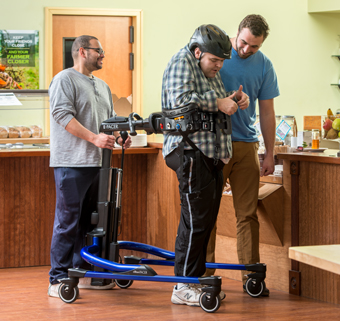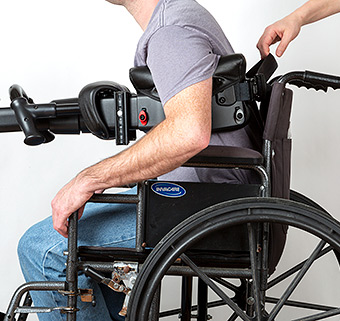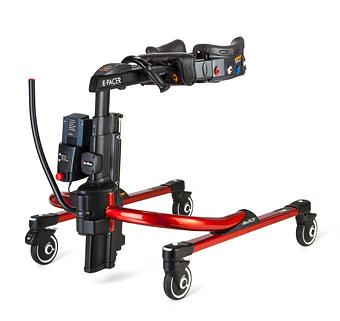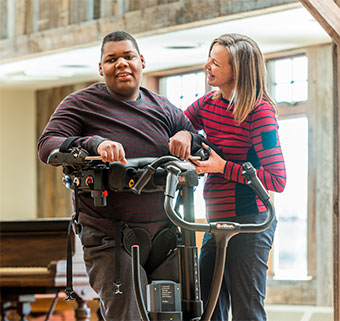Getting the Most out of Your Rifton TRAM
| November 2012 I asked our lead designer, Gideon Clement, to answer the most frequent questions we’re hearing from new TRAM users in the field. Obviously these tips are intended as general guidance only; each client is unique and it’s up to the caregiver to determine what is appropriate for each individual.
I asked our lead designer, Gideon Clement, to answer the most frequent questions we’re hearing from new TRAM users in the field. Obviously these tips are intended as general guidance only; each client is unique and it’s up to the caregiver to determine what is appropriate for each individual.
How can I stop my client from sliding down in the body support during seated transfer? If the client sags in the body support during transfer, try positioning the thigh straps farther back under the thigh – towards the buttocks and away from the knee. It may help to lift the client’s leg with one hand while working the pad back under the thigh with the other. It also helps to hook the thigh strap on one of the rear attachments (blue or gray). These points are especially true for heavily built or low-tone clients.
Before securing the body support system, have the client raise their arms, keep their back straight, and "push down" with their legs. Gently pull upward on any soft tissue if they are overweight. While the client is in this position, buckle the body support system securely (after making sure client's shirt is pulled down/tucked in.)
When should the forearm supports be used, and how should they be positioned? For many clients the forearm supports are helpful in all operations – transfer, standing and ambulation. They give the client a sense of security and control and relieve weight from the torso and legs. The forearm support pads often give the most lifting support when adjusted to the rear-most position, under the client’s elbows. But they are highly adjustable and can accommodate a wide range of positioning needs.
How can I adjust the client’s posture during ambulation? Encourage forward-leaning posture by hooking the walking saddle rings onto the rear attachment points (blue and grey). This will bring the client’s pelvis behind his shoulders (the reverse is also true, in cases where the pelvis needs to be brought forward). For people of average height and weight the saddle will generally fit and function best if the straps are crossed, as shown on page 17 of the product manual. Larger clients, however, may find the strap-crossing uncomfortable. Clinicians know their clients best and will be able to determine the optimal positioning of the pelvis and the most comfortable configuration of the walking saddle.
Should I buy a second battery with my initial TRAM purchase? For the majority of users, no. A fully charged battery has plenty of power to last through a day of heavy use. And the TRAM’s battery should always be charged overnight, even if the battery level light is still green at the end of the day; doing this will greatly extend the useful life of the battery. One battery that is charged every night will last longer than two batteries that are only charged occasionally. A lead-acid battery may never fully recover from even one complete discharge. However, even a properly cared for battery will need replacing at intervals of 3 to 5 years.
Additional resources for the TRAM
Descriptions of the TRAM accessories
Sample TRAM LOMN




